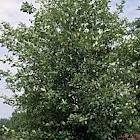ALUM, SHABBA, SHABB
Alum is used for a variety of purposes and has been used medicinally for centuries. It comes in several forms including potash alum, soda alum and aluminium potassium sulfate. We get it from bauxite ore, and in Australia there is an above ground source at Bulahdelah (the Alum Mountain
 We know that it was used by the ancient Babylonians as a mouthwash, styptic ( which heals skin tissue), a pessary for women who had irregular menstruation, as a nasal douche and as a treatment for STDs and itchy and irritated skin. The Greeks and Arabs continued using it in the same ways and also used it to treat leprosy, ear problems and gum diseases.
We know that it was used by the ancient Babylonians as a mouthwash, styptic ( which heals skin tissue), a pessary for women who had irregular menstruation, as a nasal douche and as a treatment for STDs and itchy and irritated skin. The Greeks and Arabs continued using it in the same ways and also used it to treat leprosy, ear problems and gum diseases. It has been used in the leather industry for tanning, and in baking powder and toothpaste and toothpowder. It was employed in ancient Egypt to purify water for drinking. In Ayurveda it was used for this purpose too.
 |
| Alum mountain, Australia |
The ancient Welsh physicians of Myddfai used it in this way- for “proud flesh” which is the sort which is swollen around a healing wound, or flesh that stands higher on the body than normal.
“The following is useful when proud flesh forms in a wound, namely, white alum, reduced to powder, the same powder being applied thereon.
Another for the same purpose. Take a toad that can scarcely creep, beat it with a rod, till irritated, it smells, and dies. Then put it in an earthen pot, closing the same so that no smoke can come out, or air enter in. Then burn it till it is reduced to ashes, and apply the same to the part.”
 |
| alum crystal |
The alum method seems preferable to the second one!
If you use it on an open wound it will burn- although it has been used in this way.
It was discovered in the 1920s that alum could be used as an adjuvant, in other words if it is used in a vaccine preparation the vaccine becomes more effective. It has been widely used since for this medicinal purpose, although it was first used with diphtheria vaccine.
You can also use alum as a deodorant as it has been used in crystal form since at east the time of the ancient Egyptians. It prevents the bacteria forming under the armpits which cause body odour. You can grow your own alum crystals too if you want to help your children in their science lessons- alum crystals are easy to grow.



























